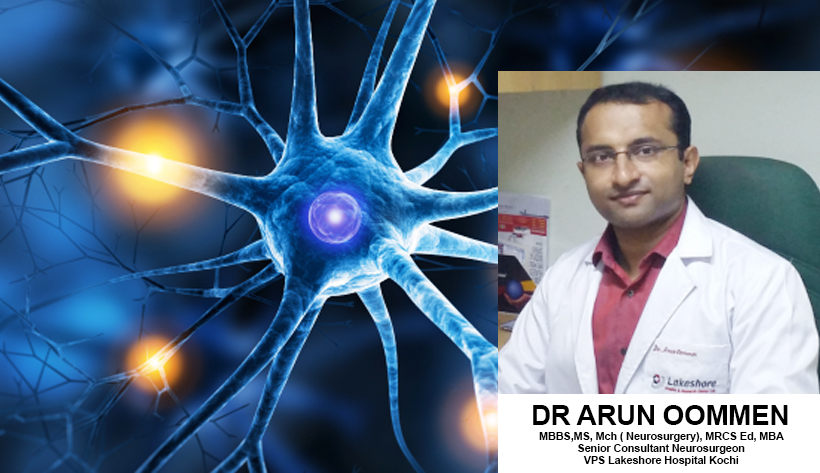A brain lesion describes damage or destruction to any part of the brain. It may be due to trauma or any other disease that can cause inflammation, malfunction, or destruction of a brain cells or brain tissue. A lesion may be localized to one part of the brain or they may be widespread. The initial damage may be so small as to not produce any initial symptoms, but progresses over time to cause obvious physical and mental changes.A brain lesion may affect the neuron directly or one of the glial cells thereby indirectly affecting neuron functions.
What causes brain lesions?
1. Trauma is the most widely recognized cause of an acute brain injury. Bleeding or swelling within the skull can directly damage brain cells or the pressure that can build within the skull can compress the brain and compromise its ability to function. Trauma can also damage the brain on a microscopic level. Shear injuries describe damage to the synapse connections between brain cells decreasing their ability to communicate with each other. Recent reports have linked concussions to the gradual destruction of brain cells that can affect personality and thinking.
2. Inflammation within brain tissue can affect function. This inflammation may be due to infections that cause meningitis and encephalitis. Other infections may cause discrete changes within the brain tissue. Neurocysticercosis, for example, is the most common cause of epilepsy in the developing world; the parasite causes small calcifications that are scattered throughout the brain. Infections may also form abscesses within the brain that can lead to symptoms.
3. Inflammatory and autoimmune diseases that may affect brain function include sarcoidosis, amyloidosis, inflammatory bowel disease and rheumatoid arthritis. Some of the brain damage may be caused by inflammation to the blood vessels in the brain, which causes strokes.
4. Certain diseases affect only specific cells within the brain. For example, the symptoms of multiple sclerosis are caused by damage to the glial cells that manufacture and maintain the myelin sheath that insulates axons. Without this normal nerve covering, electrical transmission is compromised and symptoms may occur. Alzheimer’s disease and other dementias occur when neuron cells are affected and die prematurely.
5. Stroke or cerebral infarction(cerebral=brain + infarction=loss of blood supply) describes the condition where blood supply to part of the brain is lost and and the brain stops functioning. There are numerous reasons for blood supply to decrease. There may be gradual narrowing of an artery to part of the brain, blockage may occur should debris from a diseased carotid artery break loose, or a clot may travel or embolize from the heart.
6. Bleeding may occur from a cerebral aneurysm or arteriovenous malformation or because of uncontrolled hypertension (high blood pressure).
7. Tumors that originate from brain cells or those that metastasize from other organs can affect brain function in two ways. The tumor can destroy brain cells so that their function is lost, or the tumor can take up space and cause pressure and swelling that affects brain cell function. This may occur with benign or cancerous tumors. Common tumors that arise from the brain include meningiomas, adenomas, and gliomas.
8. Pituitary adenomas are common benign tumors that grow in the sella tursica, where the pituitary gland sits and near where the optic nerves travel from the eyes to the occiput in the back of the brain. As the tumor grows it can push on the optic nerve and cause visual changes and blindness.
9. Glioblastoma multiforme, a malignant tumor is the most common type of astrocytoma that arises from astrocytes and is a glioma. Victims of this tumor include Senator Ted Kennedy, George Gershwin, and Ethel Merman.
10. Cerebral palsy describes the condition where a developing infant’s brain is deprived of oxygen and fails to develop normally. This may occur in the uterus before birth or may be due to an injury or illness that happens within the first couple of years of life. Often it is an infection or bleeding that is the cause, though many times the reason for cerebral palsy is never found
What are the signs and symptoms of brain lesions?
Initial signs and symptoms of a brain lesion are often non-specific and may include:
1. Headache
2. Nausea
3. Fever (if an infection is present)
4. Neck pain and stiffness (if the meninges are inflamed)
5. Affected vision (if there is damage along the pathway from the optic nerve to the occiput)
6. Affected speech (if there is damage to Broca’s area) Speech includes saying and understanding words.
7. Difficulty making words (due to weakness of the muscles that control the mouth)
8. Weakness or paralysis to one side of the body
9. Seizures
10. Memory loss and confusion
11. Personality changes, loss of concentration, aggression and loss of personal control












